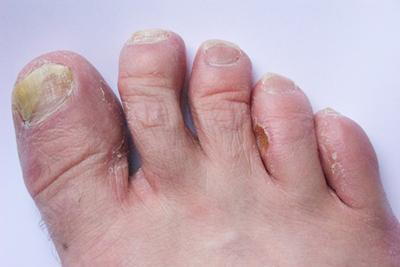
Two common fungal infections are athlete’s foot and nail fungus. Dr. Cosimo Ricciardi and Dr. Neil Patel of Emerald Coast Podiatry in Crestview and Fort Walton Beach, FL, note that people with diabetes (or other causes that weaken the immune system) are potentially more likely to develop these conditions, which can happen simultaneously (or alone) and spread easily.
Athlete’s Foot
Athlete’s foot (a.k.a. Tinea pedis) is a common type of ringworm impacting areas between the toes, tops of the feet, soles, and heels. It is more prevalent in men and people over 60. Factors such as diabetes, obesity, weakened immune system, and tissue damage can contribute to its development.
Nail Fungus
Toenail fungus (a.k.a. Tinea unguium) refers to a widespread fungal infection when fungi exist between your toenail and the toenail itself – likely through a cut or crack in the nail. While this fungus can impact people of all ages, older adults are more susceptible, especially people 60 and older. The following conditions may make the development of the fungus more likely:
- Athletes foot
- Diabetes
- An injured nail
- Inadequate blood circulation
- Psoriasis
- A weakened immune system
Similar Characteristics of Athlete’s Foot and Toenail Fungus
The overlap between athlete’s foot and nail fungus occurs because the same type of fungus—dermatophytes—are typically responsible for both infections. Bacteria, yeast, and molds can also develop into nail infections.
Additionally, athlete’s foot and nail fungus share risk factors, which include:
- Exposure to moisture.
- Warm environments.
If an athlete’s foot develops between toes, the fungus can spread to toenails and cause nail fungus.
Treating Athlete’s Foot and Nail Fungus
Various treatment options are available for athletes’ foot and nail fungus in Fort Walton Beach and Crestview, FL, with the most suitable depending on the condition’s severity and one’s overall health:
Treatment for Athlete’s Foot
Over-the-counter antifungal medications (creams, ointments, sprays, and powder) are highly effective in treating athlete’s foot. For a severe infection, prescription medication may be suggested.
Effective lifestyle remedies that can ease the symptoms of athlete’s foot and avoid its recurrence include:
- Keeping your feet dry and clean.
- Changing socks regularly.
- Protecting your feet in public.
Treatment for Nail Fungus
Most cases of toenail fungus improve with proactive self-care and over-the-counter antifungal products. However, if the condition does not improve, Dr. Ricciardi can prescribe oral antifungal medications or the kind you apply to the nails.
In more severe cases, a podiatrist may suggest temporary nail removal, allowing the application of medicine directly to the nail bed for permanent relief.
Contact a Leading Podiatrist Today
For additional information, contact Dr. Ricciardi and Dr. Neil Patel or an Emerald Coast Podiatry staff member at their offices in Fort Walton Beach, FL, at (850) 862-4119 and Crestview, FL, at (850) 682-6522. Your feet are worth it.